Today marks a very special occasion! Legend of Blue-Eyes White Dragon, Yu-Gi-Oh's very first international booster pack, was released 20 years ago, on March 8th 2002. To celebrate, let's take a look at what came before that card set, both in the card game and outside of it, then discuss some of the most important cards that were in the pack. It's time to D-D-D-D-DDDD-DUEL!
The Original Manga
There are usually two ways card games can come into existence. Either it's its own original IP (like Magic the Gathering or Mythgard) or it's set in a pre-established franchise (Hearthstone, Legends of Runeterra, Pokemon, Digimon, Star Wars, Dragonball, Austin Powers, and so, so many more). Yu-Gi-Oh kinda falls under both. The Yu-Gi-Oh! card game exists because of the Yu-Gi-Oh! manga, but, unlike most licensed card games (the second category), it's a game that exists within the franchise rather than using characters and locations from it.
The manga, created by Kazuki Takahashi, was published starting in 1996 under Weekly Shonen Jump, which also has titles such as Dragon Ball, Naruto, and One Piece. It focused on young Yugi Mutou and his friends participating in various life-or-death games, with Yugi usually coming up victorious thanks to the spirit of an ancient Egyptian pharaoh taking over his body and winning the game, afterwards punishing the opponent in some sort of gruesome fashion.
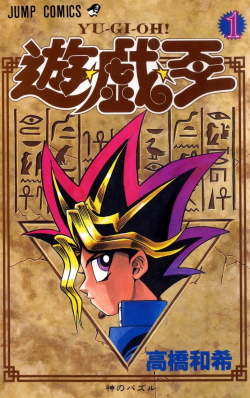
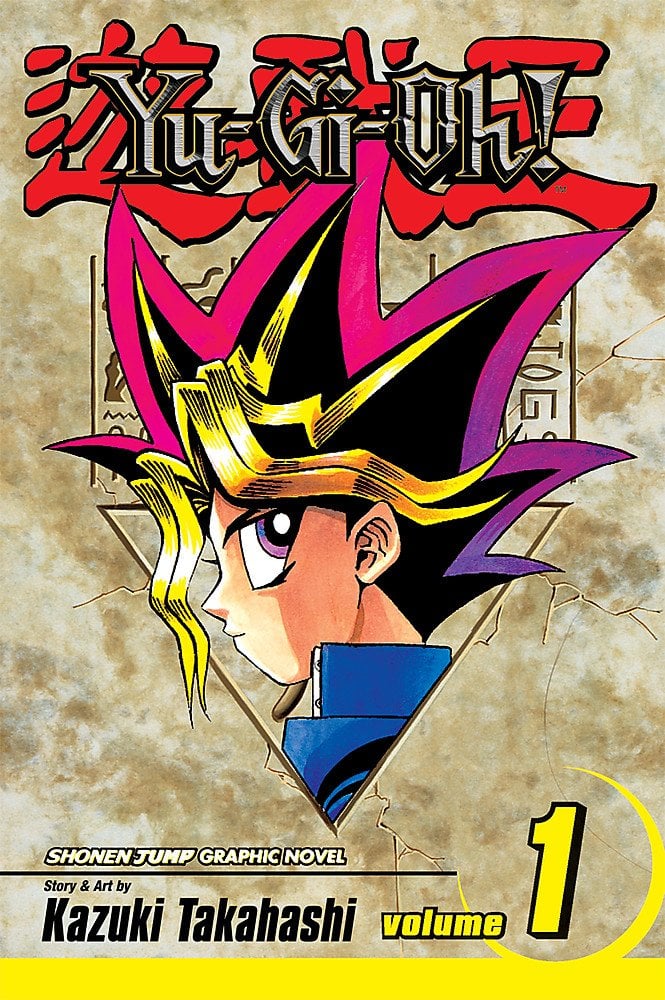
The cover of the first volume for the Japanese and English versions, respectively.
Yep, the original manga had little to do with the card game, instead being more of a horror series. For instance, in the first Chapter, "The Puzzle of the Gods", a bully extorts 200.000 yen out of Yugi. The latter shows up with 400k Yen and a challenge for the bully: Place the money on top of your hand and try to pierce as many banknotes as possible, then pass the remainder to the other player and keep what you've pierced (don't try this at home). The bully decides to cheat and just stab Yugi, who then proceeds to break his mind because of the cheating. That's how most of the manga goes.
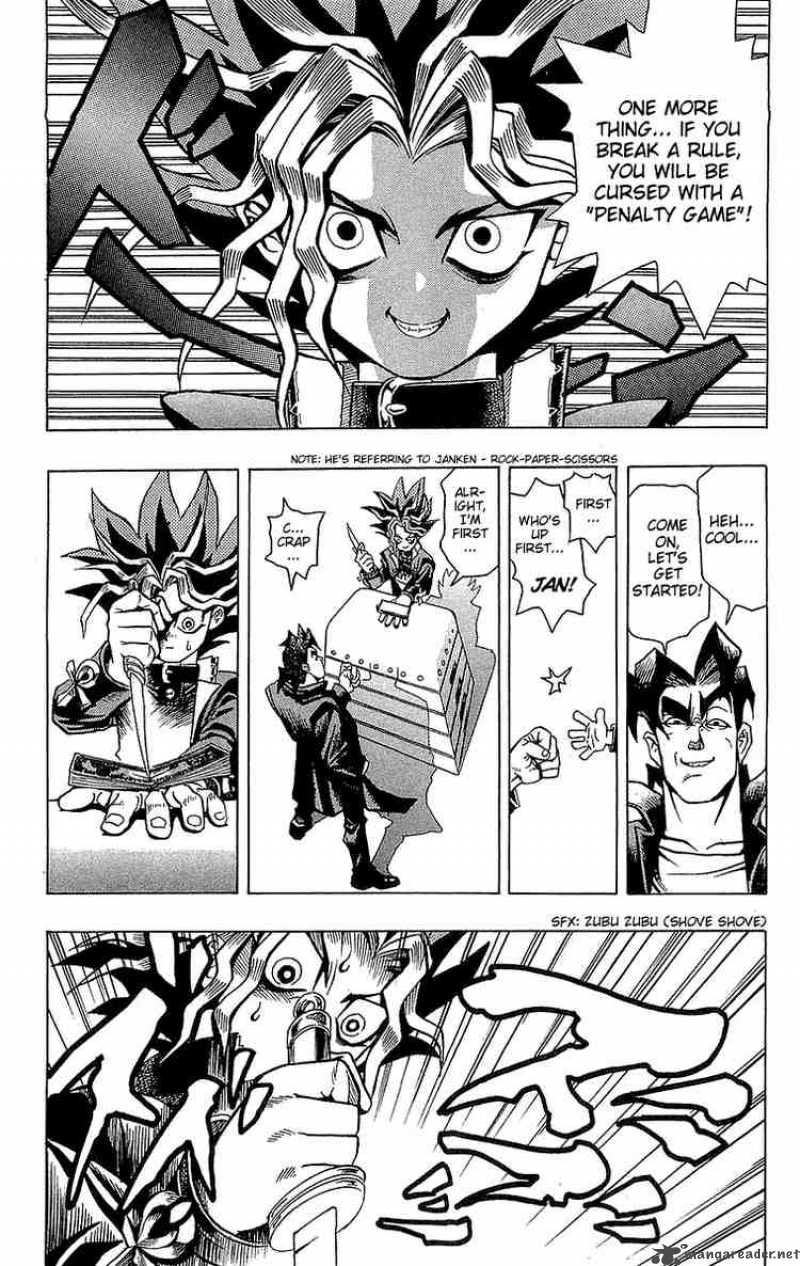
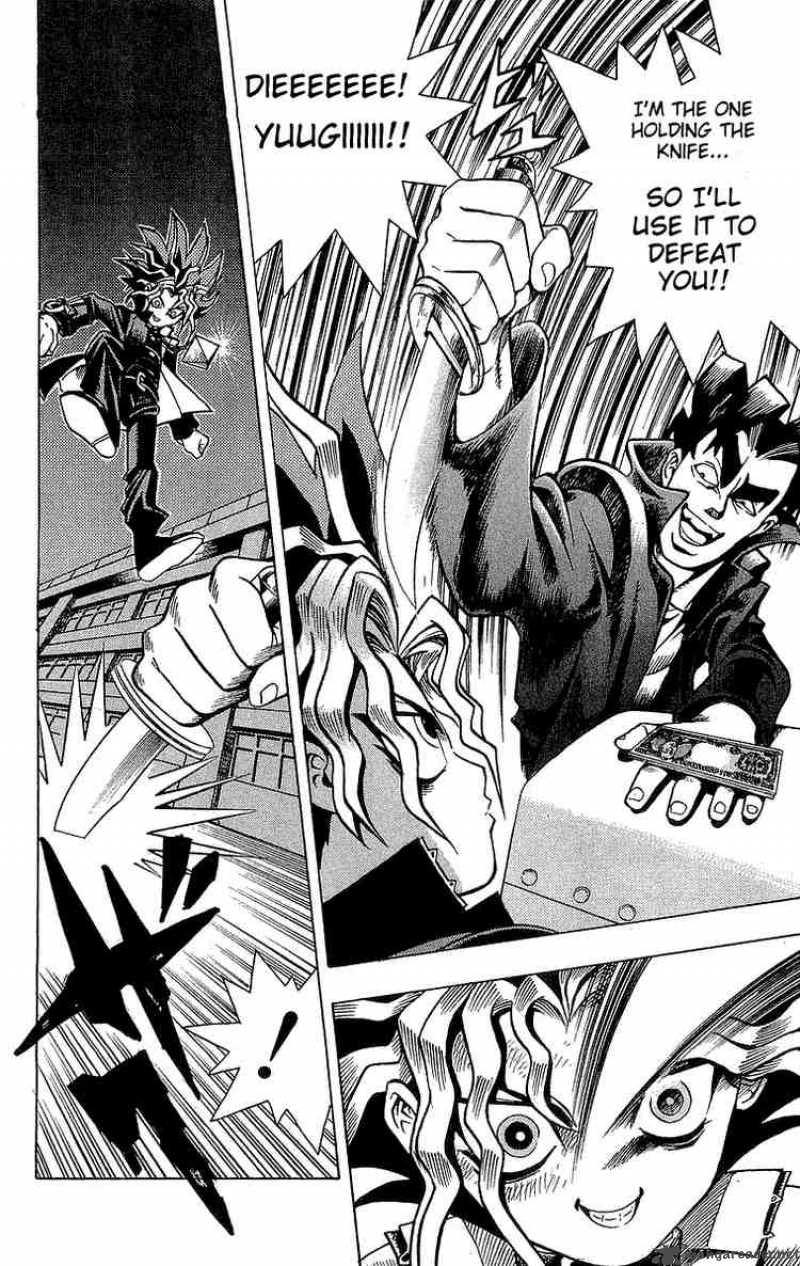
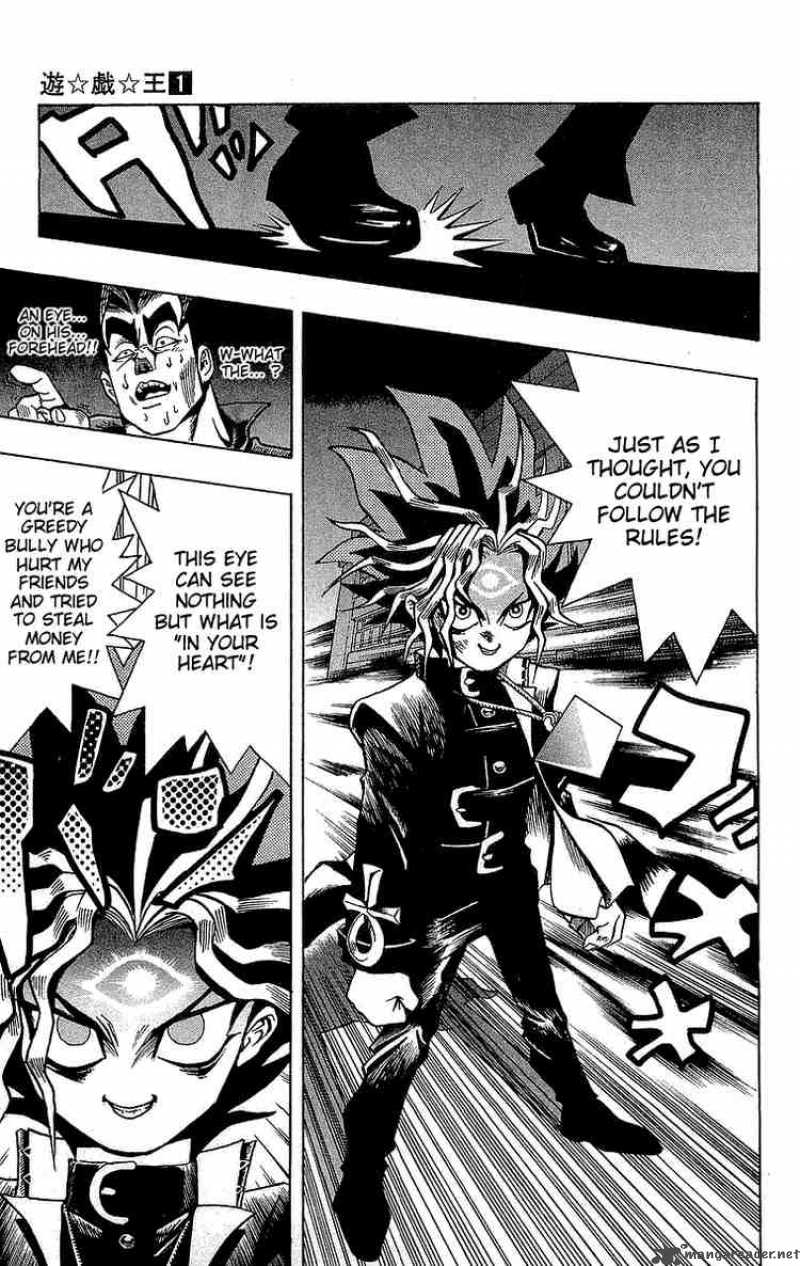
Excerpts from the first chapter of the manga.
The card game doesn't make an appearance until Chapter 9 and 10, "The Cards with Teeth". Here, Seto Kaiba, who would become Yugi's biggest rival, wants to obtain the very rare Blue-Eyes White Dragon card, who makes its first appearance here (by comparison, Dark Magician wouldn't appear until Chapter 38). In-universe, the card game is known as "Magic and Wizards", a clear reference to Magic the Gathering by Wizards of the Coast, which Takahashi was a huge fan of.
When the manga started getting more popular and having more merchandise around it, the card game's in-universe name was changed to Duel Monsters (not to be confused with Duel Masters, the absolute pinnacle of card game design, which in turn shouldn't be confused with Master Duel, Konami's latest digital version of the Yu-Gi-Oh card game).
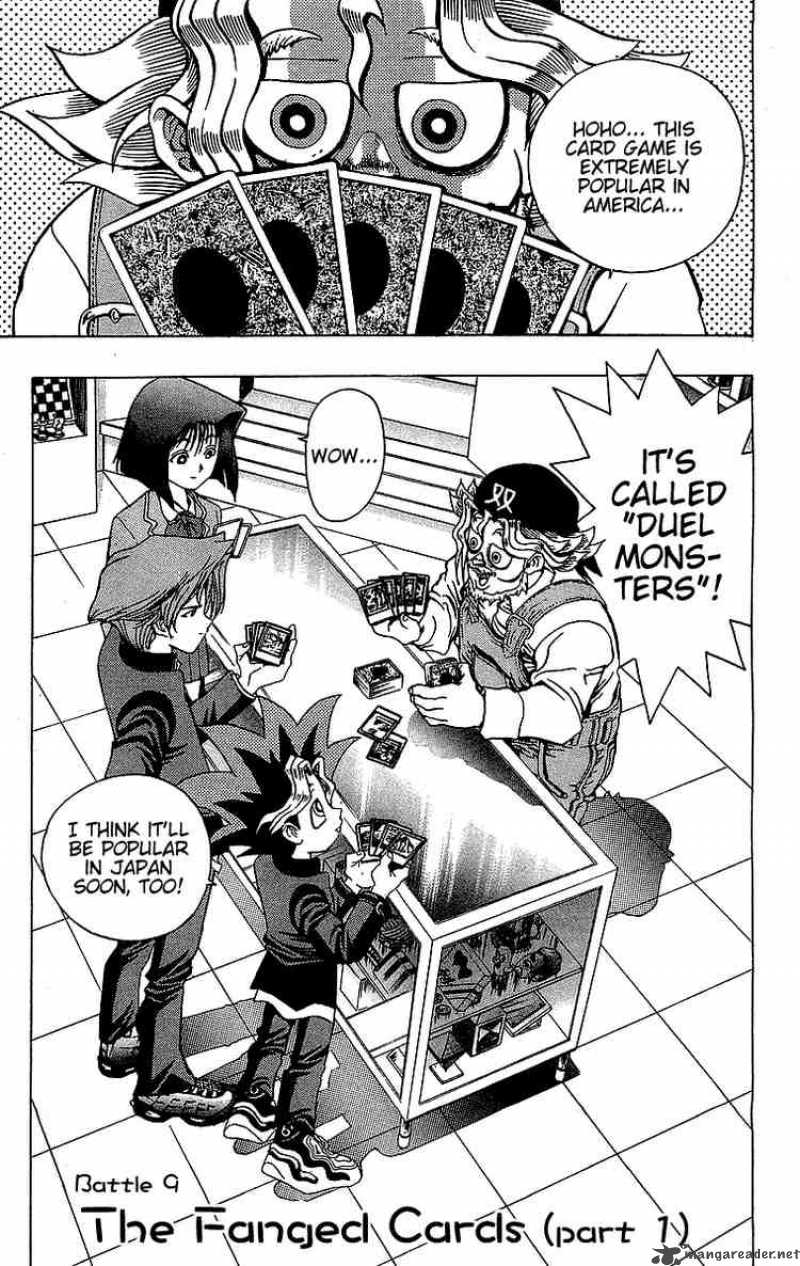
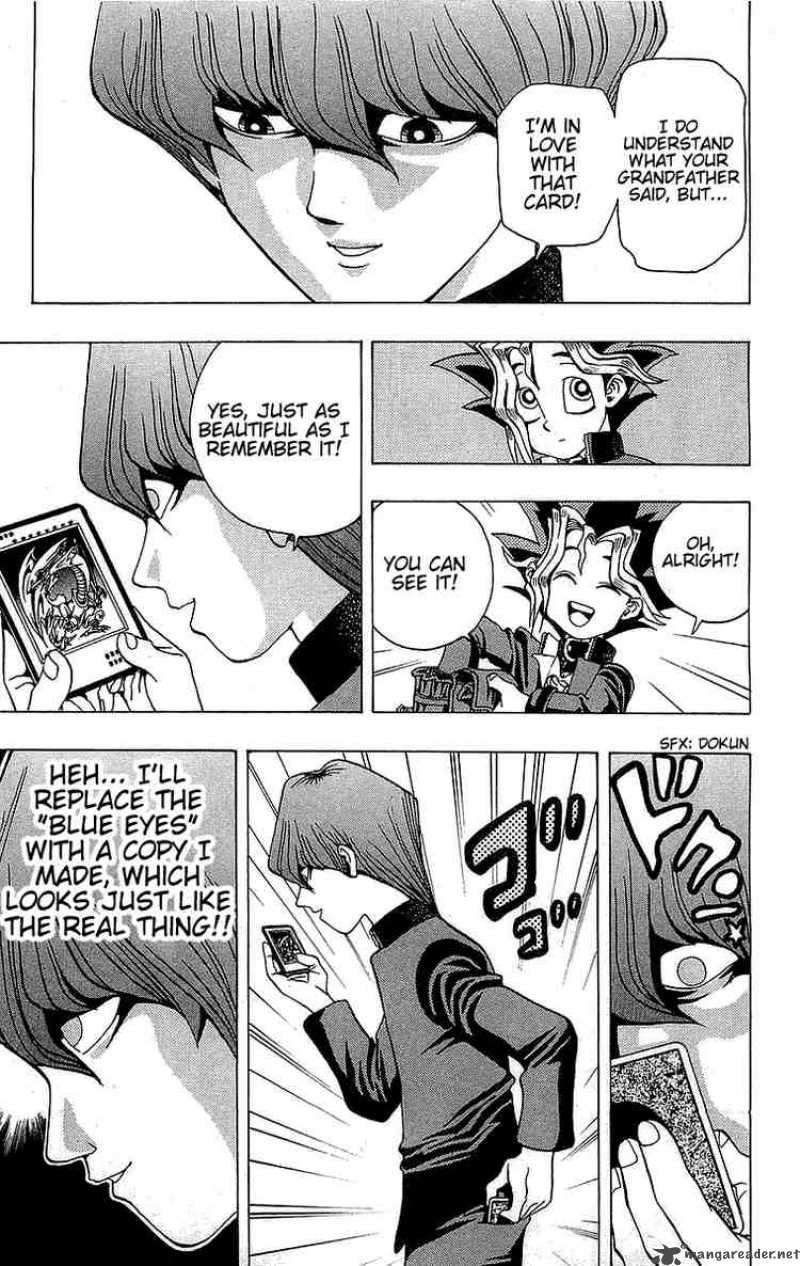
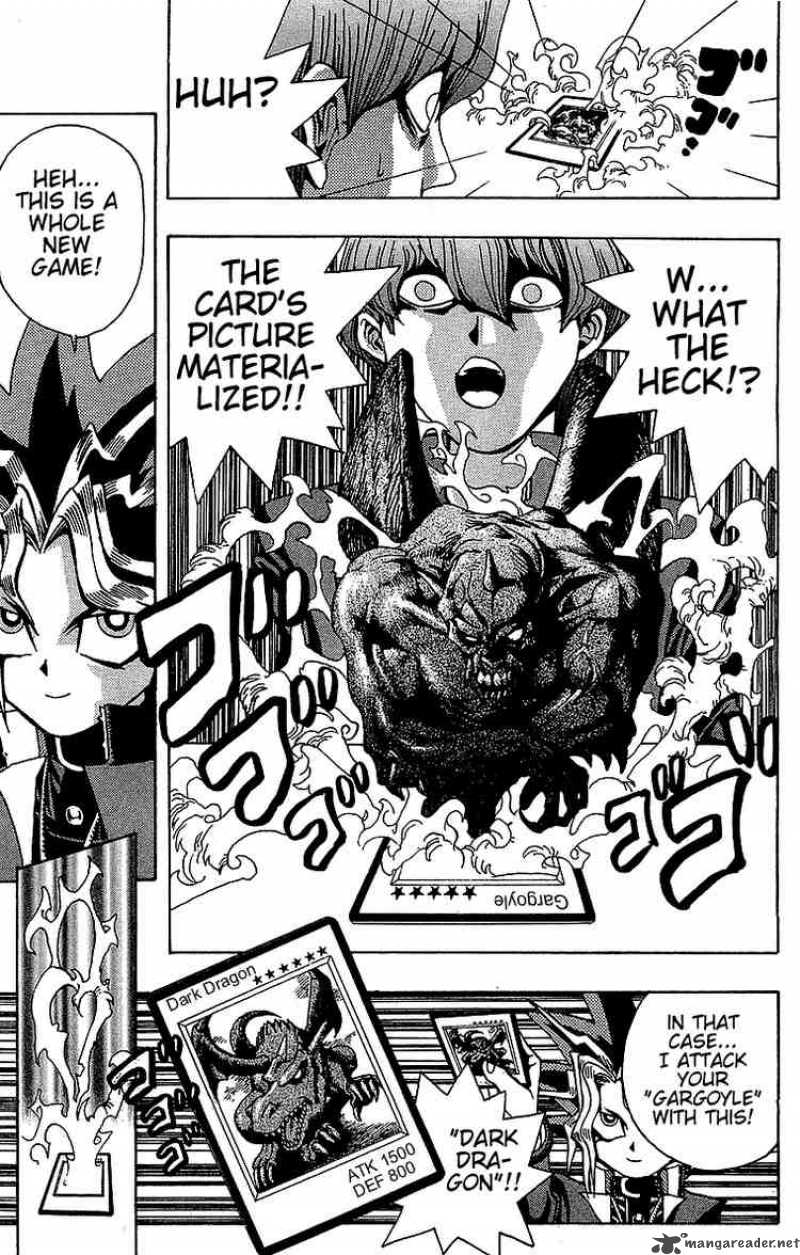
Excerpts from the chapter 9 of the manga, when the card game first appeared.
Afterwards, Duel Monsters wouldn't make another major appearance until Chapter 27, "Project Start!", and would make sporadic appearances until Chapter 60, "Challenge!!!", when the card game pretty much takes over the whole thing. The manga would continue to follow Yugi until March 8th, 2004 (what a coincidence), at which point it would enter into wat is known as the "GX era", there the entire cast is changed, with the game highlighting Fusion Summoning. Since then, the series has changed to a new protagonist and cast every few years, usually with a new method of summoning into the card game.
The Toei Anime and Bandai Card Game
Most people are probably aware of the Yu-Gi-Oh anime from the early 2000s (that's still ongoing), but most probably don't know about the series that came before it. Dubbed "Season 0" by fans (despite lacking any connection to the newer series), it ran from April to October 1998 for 27 episodes, with a 30 minute movie in March 1999. It followed the original manga quite closely, meaning the card game wasn't the main focus, instead showing the dark games the protagonist played in the manga.
During this time, Bandai started distributing a version of the card game from the anime. That's right, before Konami's version of the game, there was one distributed by Bandai. It lasted less than a year, from April 1998 to January 1999, and there were 3 sets released in this time, with between 30 and 46 cards each, and a set of 43 sticker cards as the very last release. The rules of the game were extremely different from what we have now, with the win condition being determined by who would accumulate more points before both decks ran out of cards. Let us know if you'd like for us to take a deeper dive into Bandai's version of the game.
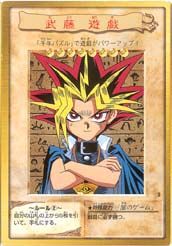
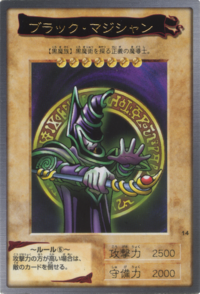
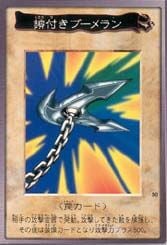
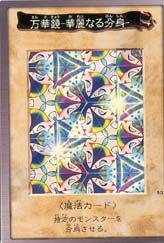
Some of Bandai's cards.
Neither of these two were ever localized in English.
This Is Where Konami Comes In
Konami actually got involved in the franchise before they started producing the card game. They were the developers of Yu-Gi-Oh! Monster Capsule: Breed and Battle for the PS1 and Yu-Gi-Oh! Duel Monsters for the Game Boy, as well as some physical cards that accompanied these games. However, in 1999, they gained exclusive rights over Yu-Gi-Oh!, and rebooted the card game and anime, but not the manga.
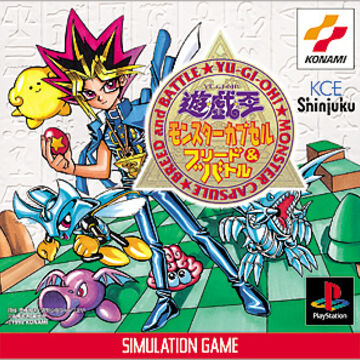
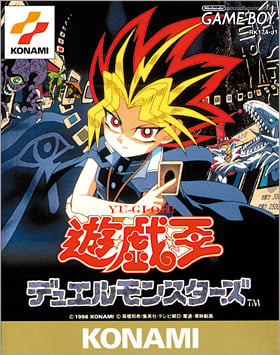
Konami creating early Digital Yu-Gi-Oh games.
On February 4th, 1999, Konami released Vol. 1, the very first booster pack in the Japanese version of their game. It featured 38 cards that appeared before in various Yu-Gi-Oh products, as well as two brand new cards at the time, Fissure and Trap Hole. The layout on the card is somewhere between Bandai's version of the cards and the one they'd eventually use when the game is released internationally.
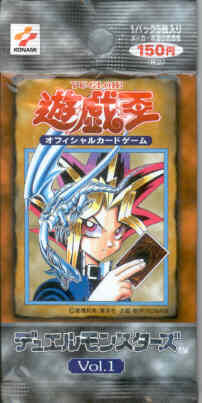
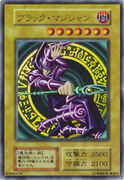
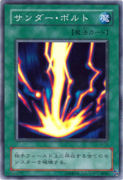
The Vol.1 Booster, along with the first version of Dark Magician and Raigeki.
Along with the new card game, a new animated series was also produced and started airing in 2000. Subtitled "Yu-Gi-Oh! Duel Monsters" in Japan and the rest of Asia, and simply "Yu-Gi-Oh!" in the rest of the world, this series largely ignores the other games played in the manga, and instead focuses solely on the card game. Interestingly, the first arc of the series, Duelist Kingdom, uses a vastly different set of rules from the actual game, only starting to resemble the real game about 50 episodes in, starting with the second arc, Battle City.
Konami's versions of both the anime and the card game were huge successes, with Yu-Gi-Oh being the top selling card game throughout the years around the world, only trading blows with Pokemon (which has a gigantic brand behind it) and Magic the Gathering (which had a 10 year head start).
Legend of Blue-Eyes White Dragon
At long last, we reach the reason for this article. Released 20 years ago today on March 8th, 2002, Legend of Blue-Eyes White Dragon marks the first time players could experience the the Yu-Gi-Oh card game outside of Japan. For those of you at home keeping score, that's 6 years after the Yu-Gi-Oh name came into existence. The booster pack had 126 cards, though only a small number of them left an impact large enough that it can still be felt today, mostly due to the anime.
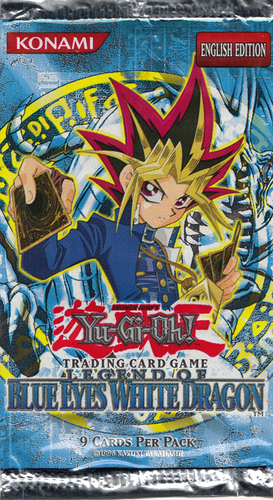
Did you buy a Legend of Blue-Eyes White Dragon booster when it came out? If not, what was your first Yu-Gi-Oh booster pack? Let us know in the comments below!
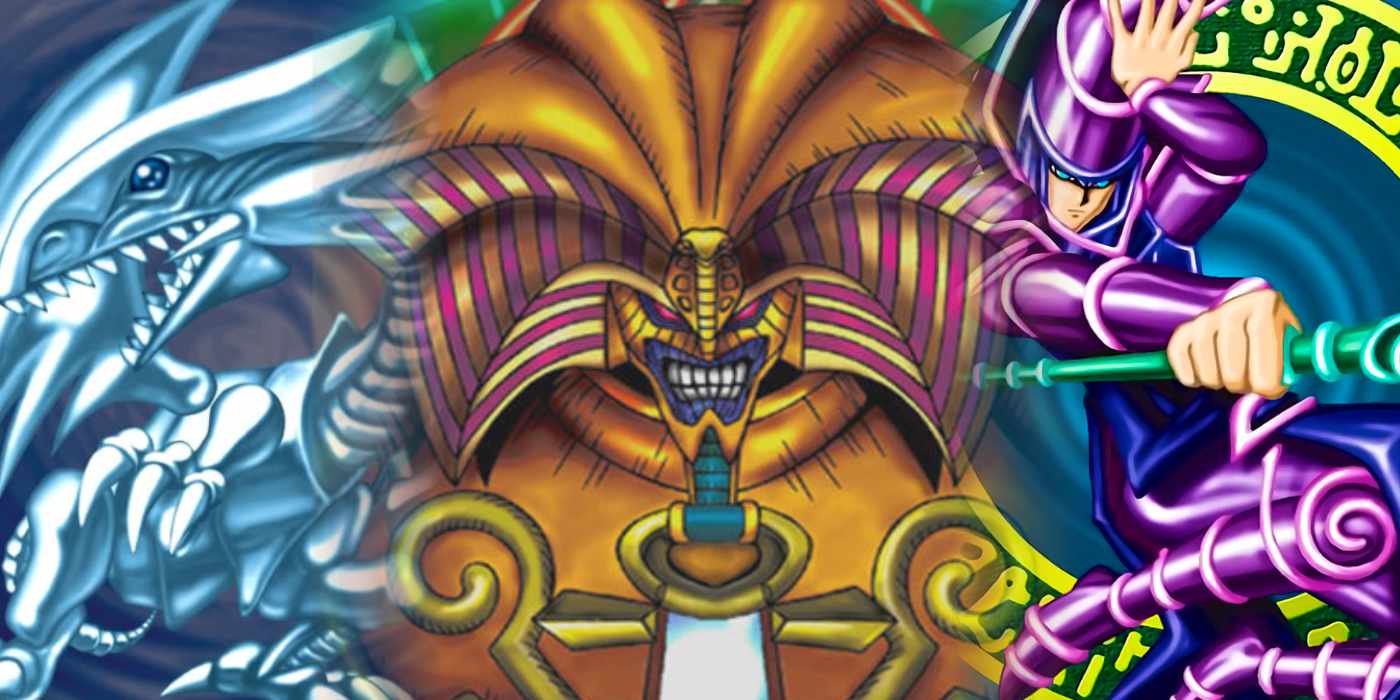
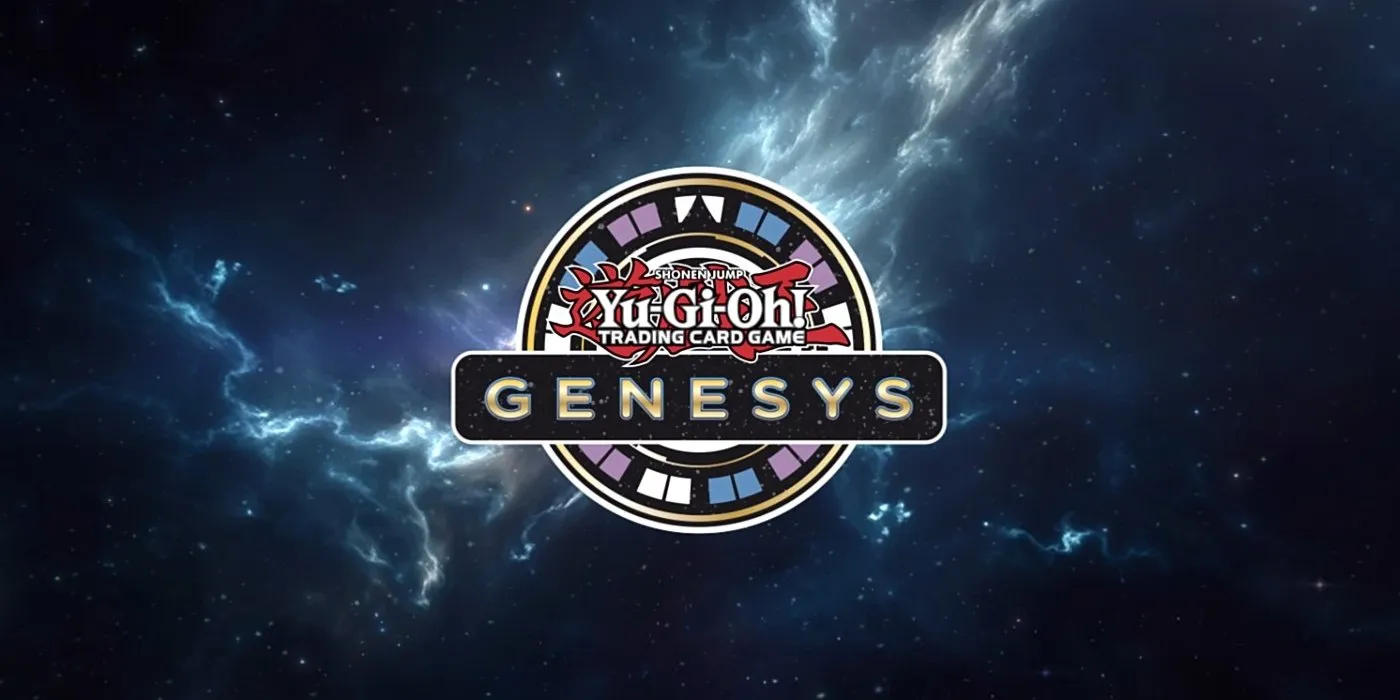
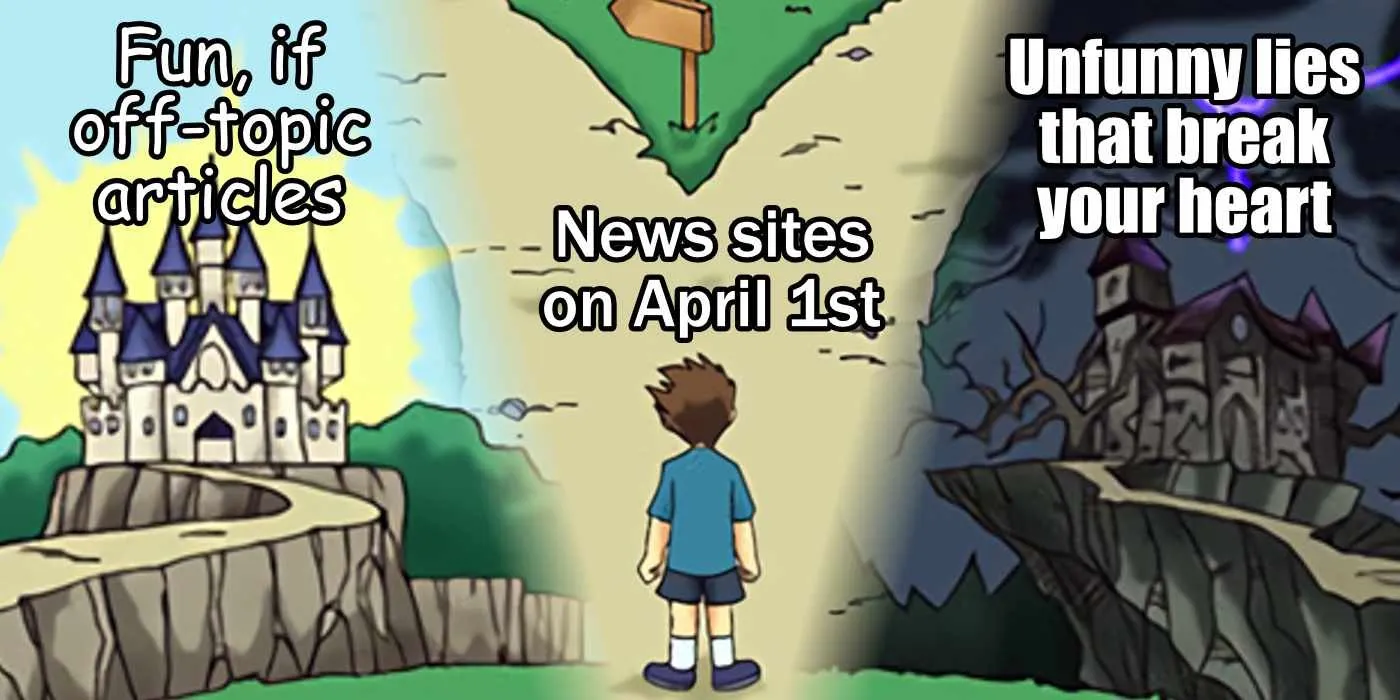
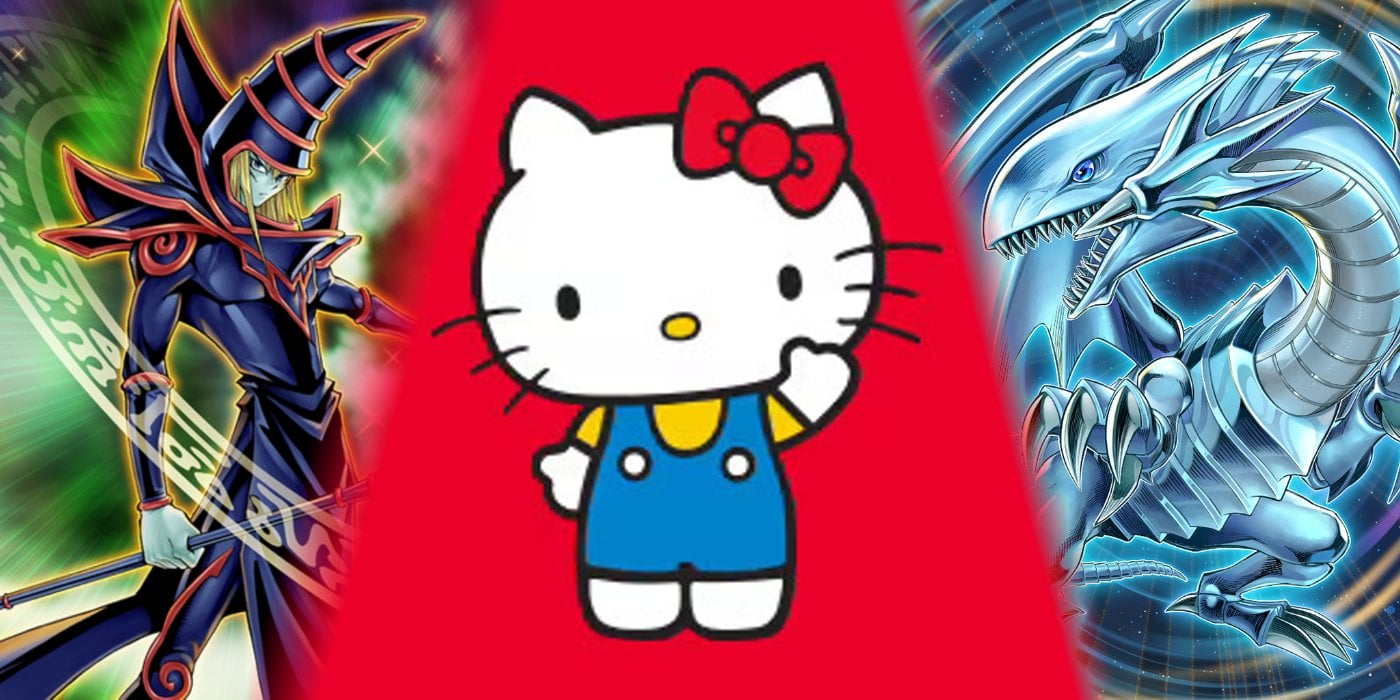
Comments
Just found my starter pack on my parent's home. Maybe is my fate playing it again.
Had major nostalgia while reading this article, well done!
Not sure if I ever opened a Legend of Blue-Eyes White Dragon booster pack, but I do remember my first foil was Curse of Dragon. Was so stoked coz the foil was epic, probably still have it 😁
Great article! I would really like to know more about the original game we never got outside of Japan.
The one from Bandai? If there's interest, I can look more into it, it's quite different.